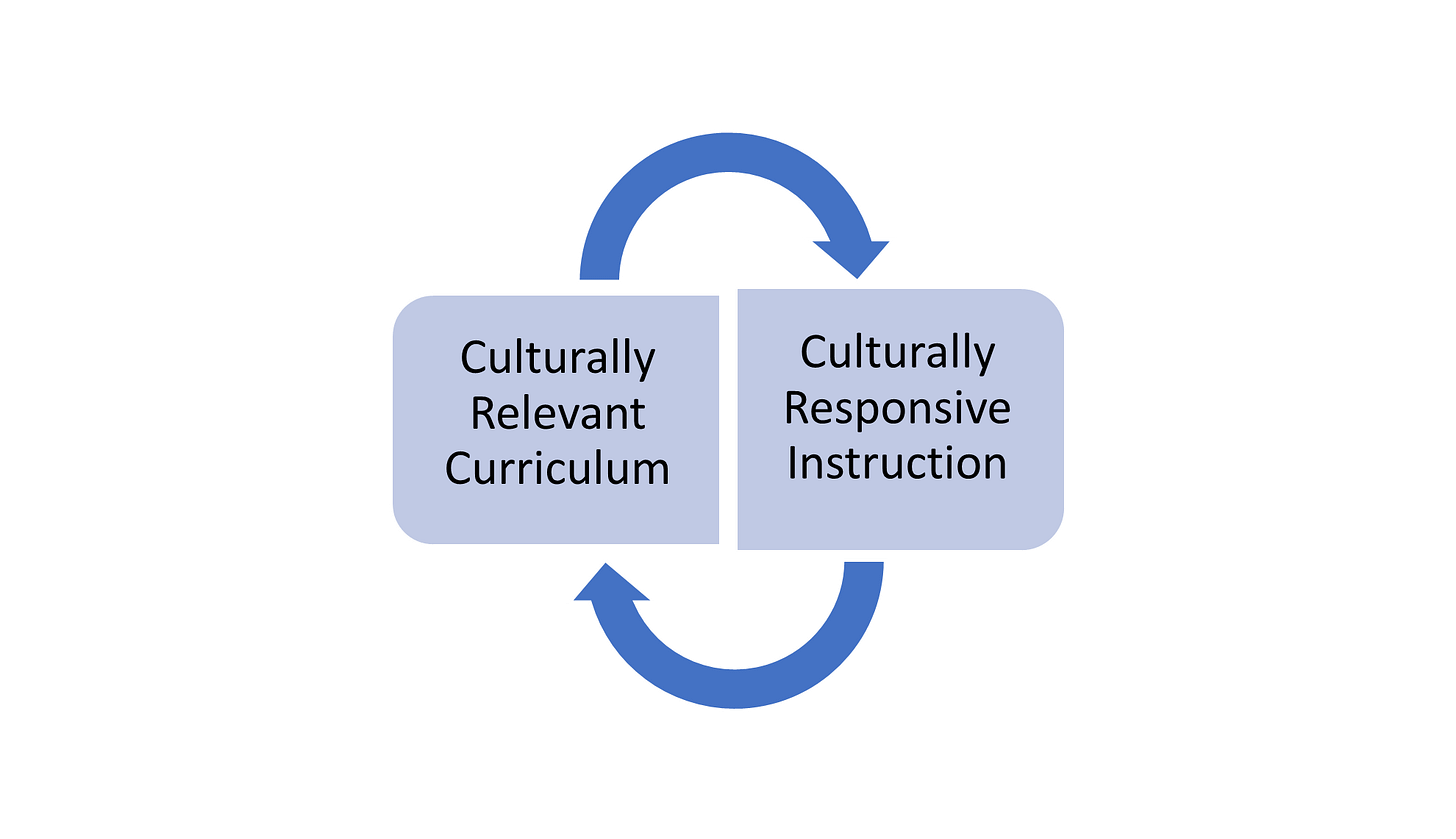Teach Your Students Where They Are
Cultivating Genius Book Study
A study summarized in a recent New York Times article1 found that students “are behind where they would be after a normal year, with the most vulnerable students showing the steepest drops” in both math and reading.
When this article was shared on Twitter, my response was, “Behind who? Their two-year-ago selves?”2
The use of crude assessment data to tell limited stories about education is nothing new. Last year the American Enterprise Institute lamented on the lack of progress for our students with higher needs.3 The protoganist: No Child Left Behind (yes, really). The villain: I think you can guess…
Public schools like mine do have responsibility for helping all our students succeed. Improvements need to be made; the work is ongoing. Yet the narratives crafted by people outside of education want us to focus on a disappointing past or an uncertain future. It is an emotional plea to “do something about it”.
What it does is induce despair and anxiety. It leads to fear for the future of our kids. We might double down on that fear by teaching in inappropriate ways such as isolated skill practice instead of preparing authentic and integrated instruction. We feel better about the visible progress kids are making, even if the learning is rote, at the expense of their interest and motivation in the learning process.
Operating out of a sense of fear, as Regie Routman notes, “is a guaranteed antidote to learning”.4 This is one of the many reasons that I appreciate Dr. Gholdy Muhammad’s book Cultivating Genius: An Equity Framework for Culturally and Historically Responsive Literacy.5 The author invites educators to be aware of and present with the students in our classrooms today, to teach our students where they are.
Creating Awareness with Culturally Relevant Curriculum
Dr. Muhammad creates awareness by explaining the history of how people of color were excluded from receiving an appropriate education, even through adulthood. “Black people created their own spaces because they are were not invited or allowed to speak or participate in White-run literary organizations” (pg. 9). This awareness can be part of a teacher’s impetus to create a more inclusive and culturally relevant curriculum. The author offers several ideas to get started in examining current unit and lesson plans.
Use diverse forms of text by diverse authors.
Build collaborative curriculum with youth.
Become a scholar of the discipline you teach and know the meaning and histories of your content areas.
Ensure the texts and topics selected for study hold themes that support defining their lives and help them to gain confidence in knowing who they are.
Embed literacy skills within the larger goal of finding meaning in langauge and the construction of meaning. (pgs. 55-57)
Being Present with Culturally Responsive Instruction
Highlighting other thinkers, Dr. Muhammad defines culturally responsive instruction as “when teaching, learning, and leadership beliefs and practices authentically respond to students’ cultural (and other) identities, the cultural (and other) identities of others, and the social times (historical and current)” (pg. 48).
After reading Cultivating Genius, I learned that separating the two constructs may be too simplistic. Culturally relevant curriculum does not teach itself. Culturally responsive instruction needs the practices, strategies, texts, and tools to successfully meet all students’ needs. There is a reciprocal relationship between each.
Dr. Muhammad does offer some suggestions to start engaging in culturally responsive instruction.
Listen to and trust the child.
Engage in teacher action research.
Ask students to write their autobiographies and personal narratives.
Interview parents or family members of students who are culturally different from them.
Study the curriculum and explore ways to make studies more meaningful to students and their families and communities. (pg. 51-52).
One final note that I want to share: I noticed in the title and subtitle that this book does not highlight any one race. I agree that designing curriculum and instruction that better supports students of color is needed. Yet these practices can make a positive impact on all of our students by cultivating the genius in each and every one of them.
From page 20 of Read, Write, Lead: Breakthrough Strategies for Schoolwide Literacy Success by Regie Routman (ASCD, 2014).



Great post and reflections Matt. Another caveat that is creating more inequitable access to quality learning are the "Pandemic Pods" that have emerged during the pandemic which are creating learning opportunities for "Those that can afford it vs. those who can't." This article from the Washington Post is from a year ago, but still relevant for understanding the affect this will have on marginalized students and families.
https://www.washingtonpost.com/education/2020/07/22/huge-problem-with-education-pandemic-pods-suddenly-popping-up/